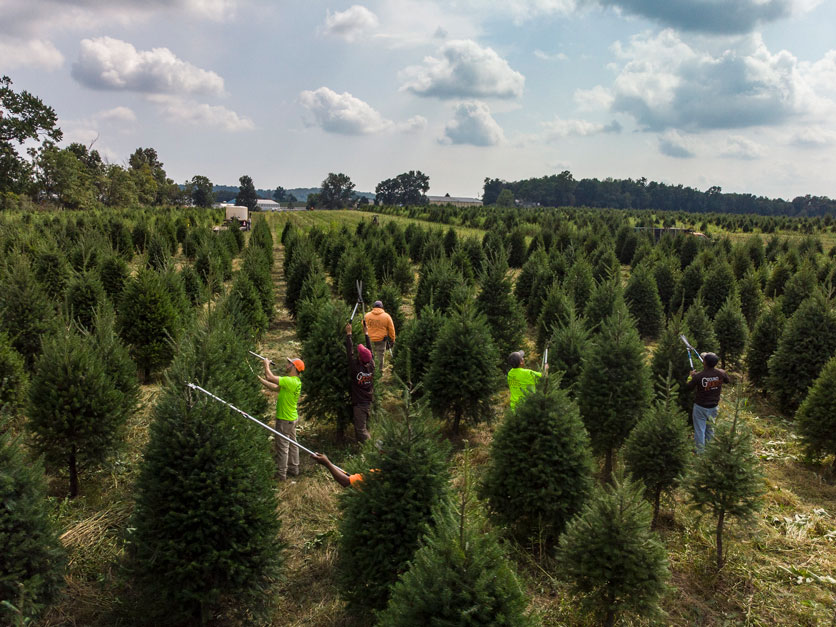With public comment now closed, around 100 advocates for farmworkers and ag employers have filed responses to the Department of Labor’s (DOL) proposed changes to calculating wage rates for the farmworker nonimmigrant visa program.
Hundreds of thousands of workers come to the U.S. on H-2A visas each year. The number has been steadily increasing as farmers and other employers continue to cite labor as one of their biggest concerns and costs.
A key tenet of the H-2A program is that employers must pay their international workers a rate that does not suppress wages for local workers. To evaluate this, DOL needs data on how much people earn in different job categories. DOL is proposing some changes to where it gets the data, what categories certain workers fall into and how it ultimately calculates the so-called Adverse Effect Wage Rate (AEWR).
The changes would include using USDA’s Farm Labor Survey (FLS) for most job types, as has historically been the case, but turning to DOL’s Occupational Employment and Wage Statistics survey when FLS data is unavailable or insufficient. Each year, DOL publishes the AEWR by state or region and the trend line for the national average has been consistently upward.
Farmworker Justice and the National Council of Agricultural Employers (NCAE) each submitted comments and provided language to their supporters that appeared in additional comments, and both found problems with the proposal.
Michael Marsh, president and CEO of NCAE, says the way the rate is calculated fails to align with local market wages.
For example, he says farm work is often short-term, and local residents doing similar jobs want reliable income year-round. That means comparing rates of on- and off-farm trucking, for example, is not an apples-to-apples equation.
Also, the proposed change would reclassify some jobs, such as driving a truck on a farm during harvest to haul produce that’s just been picked. Such a worker would get paid the higher truck driver rate even if that is only one-tenth of the person’s workday. And, Marsh said including H-2A wages in the data used to calculate the AEWR isn’t appropriate. All told, Marsh says farmers who rely on H-2A employees have an even more difficult time budgeting for their payrolls.
 Michael Marsh, NCAE“It's been very, very challenging for farmers to continually see that wage rate spiral out of control and the disconnect from the actual market for agricultural labor in the United States continue to expand,” he said. His group has asked the DOL to hold hearings to make clear and transparent “what the economics really are and what would be fair” to employers and employees. He says such hearings would establish “a record upon which to base this determination, versus simply having it be really arbitrary and capricious, the way it's done today.”
Michael Marsh, NCAE“It's been very, very challenging for farmers to continually see that wage rate spiral out of control and the disconnect from the actual market for agricultural labor in the United States continue to expand,” he said. His group has asked the DOL to hold hearings to make clear and transparent “what the economics really are and what would be fair” to employers and employees. He says such hearings would establish “a record upon which to base this determination, versus simply having it be really arbitrary and capricious, the way it's done today.”Andrew Walchuk, a staff attorney with Farmworker Justice, agrees that there is not a lot of clarity coming from DOL, there are problems with the current way the AEWR is calculated, and challenges in the methodology remain even with the proposed changes.
More fundamentally, he says "the prevailing wage system right now is not working at all.” He said calculating the AEWR is dependent upon having meaningful prevailing wage rates, which states are supposed to calculate.
“It's designed to be this broader base protection over a state or multistate area to kind of set this floor for what the wages should be,” he said. But because most states have not established prevailing wage rates for jobs subject to the AEWR, he says the AEWR, which is meant to be the minimum rate an employer must pay workers, becomes instead the most employers are willing to pay.
Looking for the best, most comprehensive and balanced news source in agriculture? Our Agri-Pulse editors don't miss a beat! Sign up for a free month-long subscription.
Because H-2A workers’ immigration status is tied to their employer, Walchuk says, they are not empowered to advocate for higher wages. Local resident workers are often also afraid to ask for higher wages because an employer can threaten to replace them with an H-2A worker.
Walchuk says his message to the DOL is that while relying on the FLS is preferable and changes to the AEWR are necessary, any changes need to be combined with broader improvements to the prevailing wage structure “so that you have that interplay between different protections. Because right now, the system is just kind of thrown out of balance because that prevailing wage portion is not functioning.”
Specific details about which jobs’ wages would come out of the OEWS and who would need to be reclassified would have different impacts by ag sector and geography.
 Allison Crittenden, Farm Bureau
Allison Crittenden, Farm Bureau
The Leadership Conference on Civil and Human Rights, in its comment, said the prevailing wage rate system and the H-2A program have failed to protect locals, in particular Black agricultural equipment operators in the Mississippi Delta. Citing what the group claims is a history of federal rule-making that discriminates against workers of color, the group says the current proposal “appears in many ways to be an extension of these discriminatory policies.”
Their comment also claims the state of Mississippi “failed miserably in gauging and enforcing local minimum wage levels. And the continued use of the AEWR as the sole measure of U.S. worker wages, as the Department proposes in the NPRM [Notice of Proposed Rule Making], perpetuates these failures and further undercuts the wages of U.S. workers.”
But Allison Crittenden, director of congressional relations at the American Farm Bureau Federation, said some of the detailed debate around how the AEWR is calculated may be irrelevant in many parts of the ag economy.
“After you get back to why we have the adverse effect wage rate to begin with, it's supposedly to protect a domestic population that may want these jobs,” she said. “But what we've seen now is domestic workers don't want these jobs. So, what really is the purpose of an adverse effect wage rate when there's not a population in which to protect?”
One of her concerns is that the proposed change would mean adjustments to wages for jobs falling under the OEWS would come midyear.
“Certainly that would have an impact on a firm's ability to make business planning decisions when their labor expenditures could shift drastically in the middle of their season,” she said.
For more news, go to www.Agri-Pulse.com.

